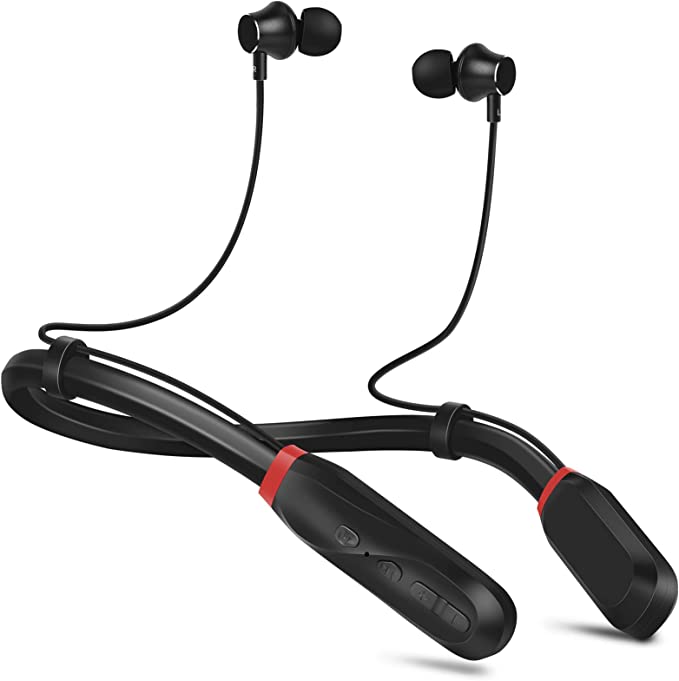We live immersed in a complex sonic world. Our days are woven with threads of desired sound – the music that moves us, the voices that connect us, the podcasts that inform us. Yet, this tapestry is often frayed by the relentless hum of unwanted noise: the drone of traffic, the clatter of construction, the indistinct chatter of crowds, the persistent whir of machinery. It’s a modern paradox – craving immersive audio experiences while simultaneously yearning for an escape, a pocket of tranquility in the auditory storm. In this landscape, technologies like True Wireless Stereo (TWS) earbuds have emerged not just as conduits for sound, but as tools for reclaiming a measure of control over our personal soundscape. The Skullcandy Indy ANC, though its production lifecycle has concluded, stands as a fascinating case study, embodying two powerful technological currents aimed at addressing this very paradox: Active Noise Cancellation (ANC) and Personal Sound. Let’s journey beyond the surface and explore the remarkable science that allows these tiny devices to reshape our auditory reality. How do we truly silence the clamor, and what does it mean to have sound tailored not just for us, but to us?

The Quest for Quietude: Unraveling Active Noise Cancellation (ANC)
The desire for silence, or at least a reduction in intrusive noise, is ancient. But the technological means to achieve it actively, especially in a portable form, is a relatively recent marvel. While the story often begins in the demanding environment of aircraft cockpits, where pilots needed to hear crucial communications over engine roar, the essence of Active Noise Cancellation has now permeated our daily lives, promising a personal “bubble of silence.”
Before diving into the active approach, we must acknowledge its foundation: passive noise isolation. This is the first line of defense, achieved simply by creating a physical barrier between your ear canal and the outside world. A well-fitting earbud, like those provided with the Indy ANC in multiple sizes (3 ear gels, 2 stability gels), acts like an earmuff, dampening incoming sound waves, particularly higher frequencies. It’s physics in its most straightforward form – block the path, reduce the sound. But passive isolation has its limits, especially against pervasive, low-frequency noise – the very kind that drones from engines, fans, and HVAC systems. This is where the ingenuity of ANC truly shines.
Imagine ANC not as a wall, but as a sophisticated form of acoustic martial arts. Instead of just blocking the incoming noise ‘attack’, it actively counters it. Here’s the choreography:
1. Listen: Tiny microphones embedded on the exterior of the earbuds constantly sample the ambient noise reaching the listener.
2. Analyze & Invert: A sophisticated processor inside the earbud instantly analyzes this incoming sound wave signature. Its crucial task is to generate a new sound wave that is the exact mirror image – 180 degrees out of phase – with the unwanted noise. This is the ‘anti-noise’.
3. Cancel: The earbud’s speaker emits this precisely crafted anti-noise wave.
The magic happens when the original noise wave and the generated anti-noise wave meet within your ear canal. Due to the principle of destructive interference, where a wave crest meets an opposing trough, they effectively cancel each other out. Think of two perfectly matched ripples on a pond colliding and flattening the water surface. The result? A significant reduction in the perceived level of the targeted noise. The Indy ANC incorporated this technology, aiming to deliver that coveted sense of quiet.
However, this acoustic sorcery isn’t without its nuances and limitations. ANC is most effective against consistent, low-frequency sounds because their predictable, longer wavelengths are easier for the system to accurately analyze and counteract in real-time. Sudden, sharp noises (like a dropped plate) or high-frequency sounds (like nearby conversations) are much harder to cancel effectively. Their shorter wavelengths and unpredictable nature give the system less time and less reliable information to generate a precise anti-noise signal. This is why even the best ANC systems benefit immensely from good passive isolation provided by a snug fit – the better the physical seal, the less high-frequency sound leaks in, allowing the ANC to focus on the low-frequency drones it excels at combating.
Furthermore, some users report a subtle sensation of ‘pressure’ when using ANC, even without music playing. This isn’t fully understood but might relate to the alteration of the natural sound field, individual ear canal sensitivity, or psychoacoustic effects. It underscores that our perception of ‘silence’ is complex.
Recognizing that complete isolation isn’t always desirable, many ANC systems, including the one described for the Indy ANC, feature an Ambient Mode. This essentially reverses the principle slightly: instead of canceling outside sound, the external microphones pass through selected ambient sounds, allowing you to stay aware of your surroundings – useful for conversations or hearing traffic announcements without removing your earbuds.
Audio Tailored, Not Just Transmitted: The Revolution of Personal Sound
If ANC is about controlling the sound around us, Personal Sound technology tackles a different, perhaps more intimate challenge: optimizing the sound within us. We often assume that the music or audio fed into our ears is perceived identically by everyone, but the reality, grounded in the fascinating field of psychoacoustics (the study of how humans perceive sound), is far more nuanced. Our hearing isn’t uniform. Just as we have unique fingerprints, we possess unique ‘hearing fingerprints’. Sensitivity to different frequencies varies significantly based on age, genetics, noise exposure history, and even slight physiological differences between our own two ears. The standard audio frequency range for human hearing is generally accepted as 20Hz to 20KHz, a specification met by the Indy ANC, but how clearly we perceive sounds across that entire spectrum is highly individual.
Traditional equalizers (EQs) offer adjustments, allowing users to boost bass or treble according to preference. But this is a blunt instrument compared to addressing the specific contours of an individual’s hearing profile. Imagine trying to correct complex vision issues with non-prescription magnifying glasses versus obtaining custom-fitted prescription lenses. Personal Sound technology aims to be the latter – prescription audio for your ears.
The Skullcandy Indy ANC implemented this through its companion Skullcandy App. The process typically involves a guided hearing test directly through the earbuds. While specifics vary, these tests often assess your hearing threshold or sensitivity at various key frequencies across the spectrum for each ear independently. You might be asked to indicate the quietest tone you can hear at different pitches, for instance.
Based on your responses, the app’s algorithm constructs your unique hearing profile. It identifies frequencies where your sensitivity might be lower than average. The ‘magic’ then happens in the digital signal processing: the system intelligently adjusts the audio output before it reaches your ears. It subtly boosts the specific frequencies you’re less sensitive to, aiming to compensate for those dips in your hearing curve. The goal isn’t necessarily to make everything louder, but to restore balance, clarity, and detail that might otherwise be lost to you, bringing the perceived sound closer to what the artist or sound engineer originally intended.
For the listener, the potential benefits are significant: potentially clearer vocals, better instrument separation, richer detail in complex tracks, and possibly reduced listening fatigue because your brain isn’t straining as hard to ‘fill in the gaps’. However, it’s crucial to understand that this is an auditory enhancement, designed to optimize the listening experience based on psychoacoustic principles. It is not a medical device and cannot replace hearing aids for clinical hearing loss. Its effectiveness also depends on the accuracy of the hearing test, the sophistication of the processing algorithm, and the inherent quality of the earbud’s drivers.
Weaving Technology into Reality: Power, Fit, and the Wireless Weave
These sophisticated audio processing techniques – both the constant analysis for ANC and the customized adjustments for Personal Sound – don’t happen in a vacuum. They require computational power, which in turn demands electrical energy, all within the tiny confines of a TWS earbud. This is where modern battery technology, specifically the high energy density offered by Lithium-based batteries (like the Lithium Metal type specified for the Indy ANC), becomes essential. It allows these features to run for hours on a single charge.
The Indy ANC’s specifications clearly illustrate the energy trade-off inherent in ANC: approximately 5 hours of playback in the earbuds with ANC active, extending to a more generous 9 hours with ANC turned off. The charging case acts as a mobile power bank, significantly extending total listening time (19 hours total with ANC, 32 hours without). Features like Rapid Charge (providing 2 hours of play from a 10-minute charge) further mitigate battery anxiety, leveraging advancements in charging circuitry to deliver quick power boosts – a practical necessity for users reliant on their earbuds throughout the day.
Beyond power, the physical interface – the fit – remains paramount. As discussed, a secure and comfortable seal, facilitated by providing multiple sizes of ear gels and stability aids (like the Indy ANC’s offerings), is foundational. It ensures comfort for long listening sessions, maximizes passive noise isolation, and crucially, allows the ANC system to perform optimally by creating a controlled acoustic environment within the ear canal.
The wireless connection itself, predominantly handled by Bluetooth technology in the TWS world (the HDMI listing in the source data appears to be an error), is the invisible thread linking the earbuds to the audio source and, often, to each other. While Bluetooth has evolved significantly, maintaining a stable, perfectly synchronized connection between two independent earbuds and the source device, especially in environments crowded with radio signals, remains a complex engineering challenge for all TWS devices.
Finally, practical durability matters. The stated “dust- and water-resistant” quality of the Indy ANC acknowledges that earbuds face the rigors of daily life – workouts, commutes, occasional spills. While the lack of a specific IP (Ingress Protection) rating means the exact level of protection is undefined, such resistance offers a welcome layer of defense for the intricate electronics housed within.
Conclusion: Engineering Experience, Beyond Just Listening
The Skullcandy Indy ANC, viewed through the lens of its core technologies, represents more than just another pair of wireless earbuds. It embodies a significant trend in personal audio: the shift from passive consumption to active control and profound personalization of our listening experience. Active Noise Cancellation, born from practical needs and refined through decades of acoustic engineering, empowers us to sculpt our immediate sonic environment, carving out pockets of focus or tranquility. Personal Sound, rooted in the understanding of individual psychoacoustic differences, strives to deliver audio that resonates more truly and clearly with each unique listener.
These advancements aren’t mere features; they are the result of applied science – wave physics, signal processing, psychoacoustics, materials science, and battery chemistry – all converging in remarkably compact devices. Understanding the ‘how’ and ‘why’ behind these technologies elevates our appreciation beyond simple functionality. It reveals the intricate engineering designed to mediate our relationship with the ever-present world of sound.
As technology continues its relentless march, we can anticipate further refinements: perhaps ANC that adapts more intelligently to changing environments, Personal Sound profiles that capture even more nuance, or even seamless integration with other sensory inputs. The journey of personal audio is far from over. But devices like the Indy ANC remind us that this journey is fundamentally about empowering the individual listener – offering not just ways to hear, but new ways to experience the world, one carefully sculpted sound wave at a time. It invites us to listen more consciously, not just to the content, but to the silence, the personalization, and the remarkable science that makes it all possible.




